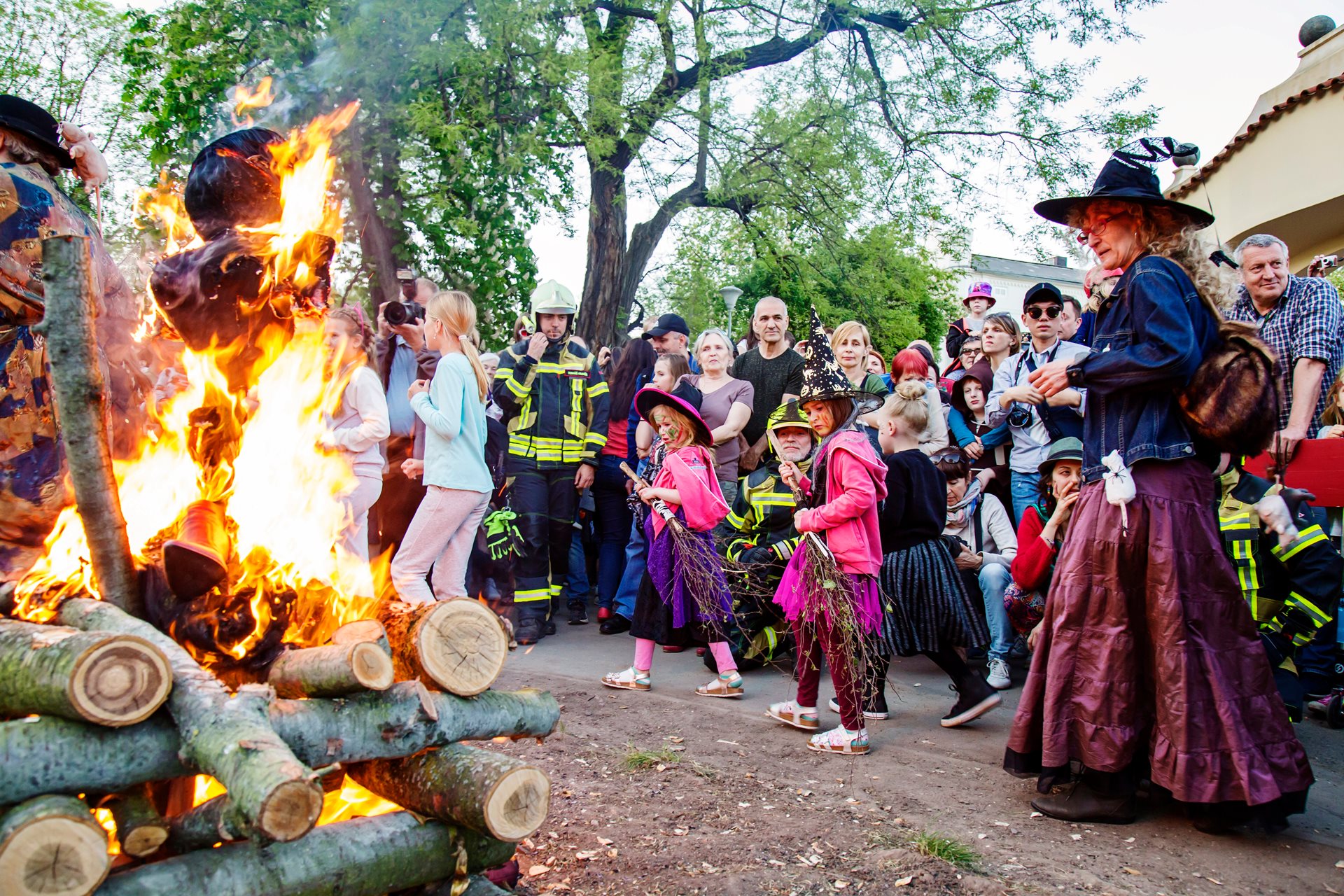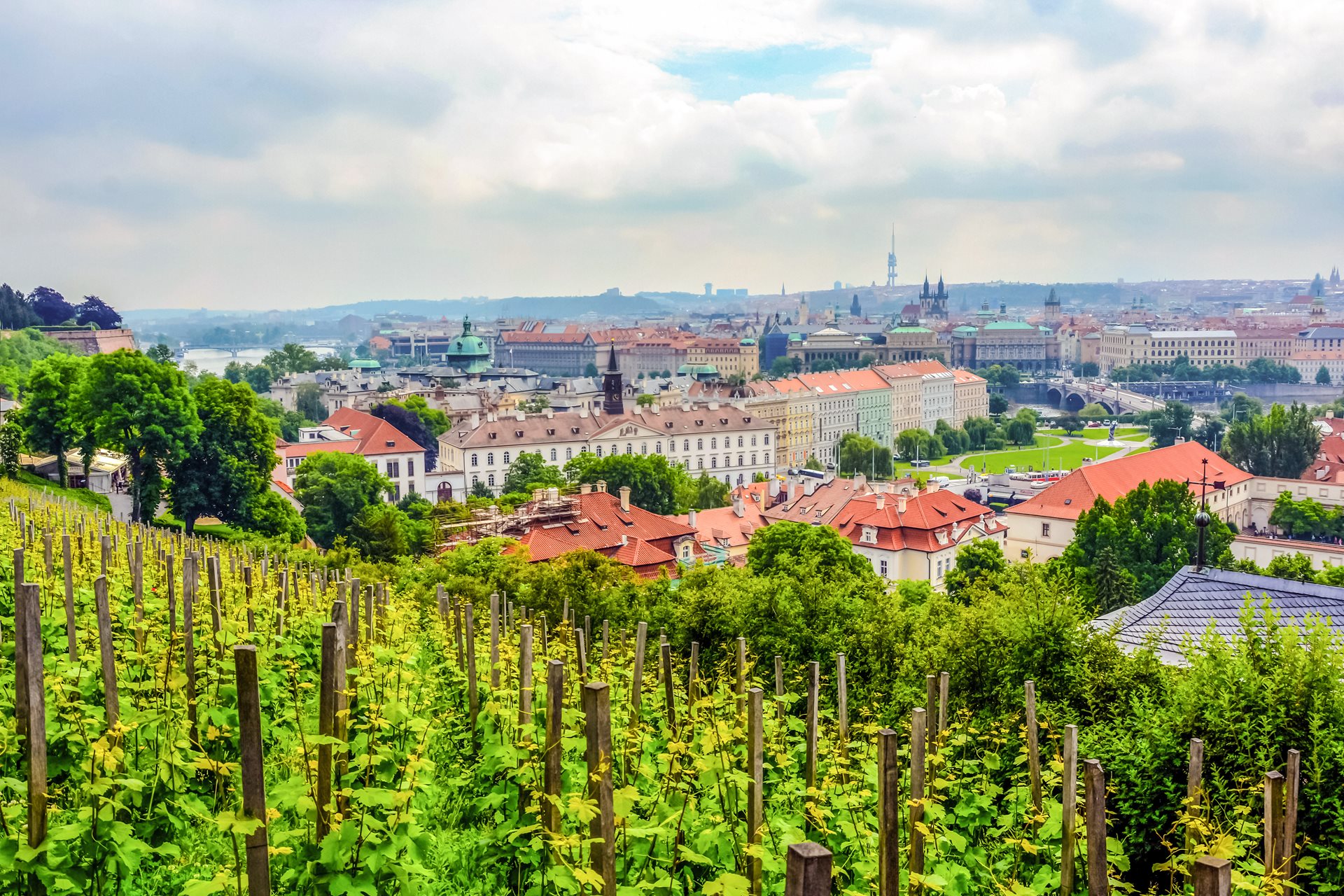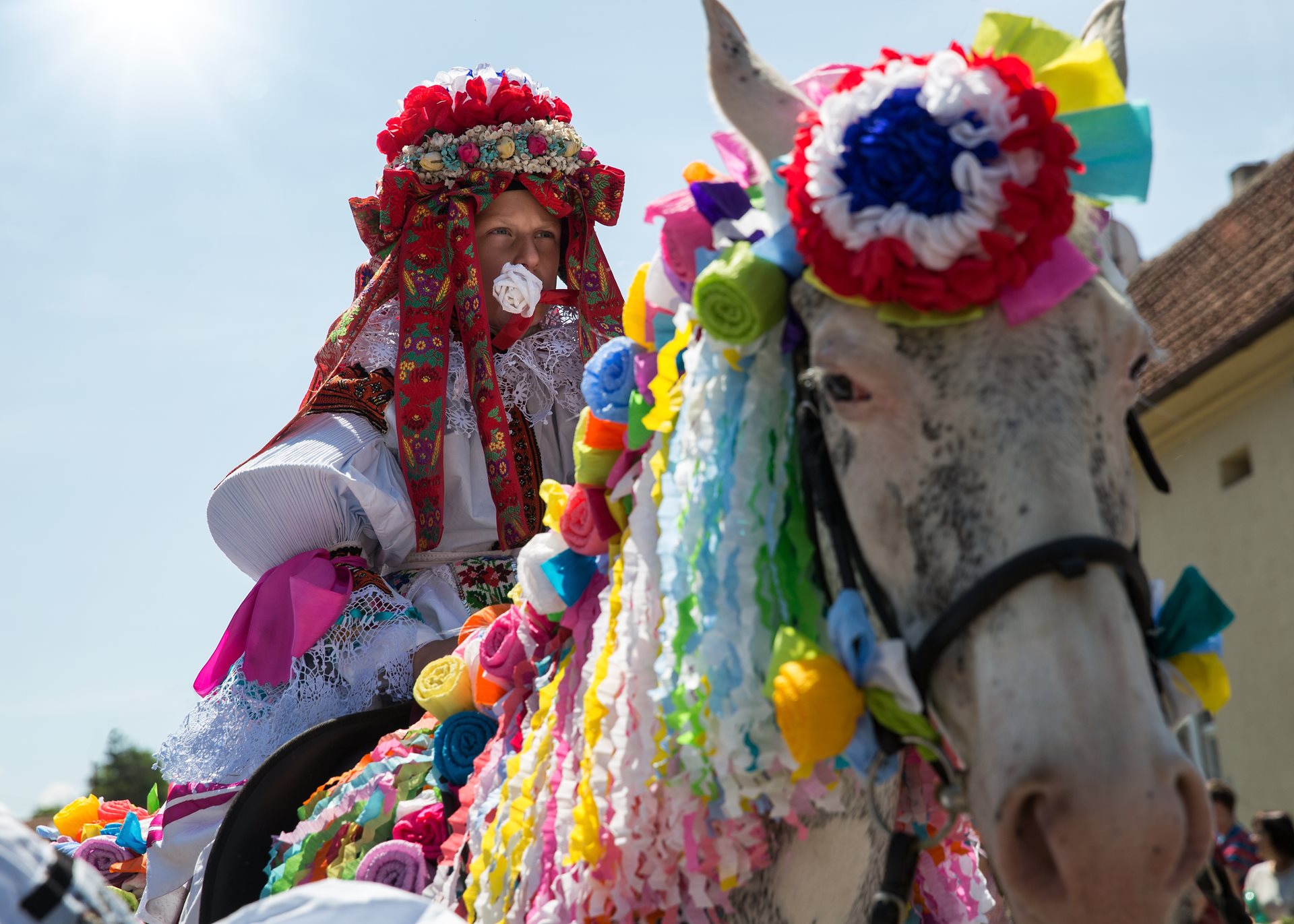Czech folk traditions in spring mostly occur in the Easter period. Winter Carnival, spring fasting and then the Easter celebrations themselves. But traditions go much further than just these spring holidays. We will show you what other traditions Czechs like to celebrate and what you can encounter in Czechia during your travels including large bonfires, kisses under flowering trees and initiation ceremonies of young men, among others.
Burning of witches, also known as Walpurgis Night
In Czechia, the last night of April, also called Walpurgis Night, is traditionally connected with the so-called burning of witches. This interesting custom dates to pre-Christian times, when it was believed that on the night of 30 April to 1 May, evil forces had the greatest power and that people not only had to protect themselves, but also their households and their cattle from them. It was believed that during this night, many witches were flying in the air, travelling to a witch gathering. And since, according to folk superstitions, witches can only be killed by fire, borders were set on fire in the evening, noisy games were played to scare away these supernatural beings, and feasts were held. In some locations, lit brooms or rag balls were thrown into the air to ward off the witches and weaken their power while, elsewhere, effigies of witches made of straw and wood were symbolically thrown into the fire. To this day, the burning of witches has been preserved more in the sense of general folk entertainment and merriment. And where in the Czech Republic would you most likely encounter this holiday celebration? The outskirts of a town or village are common locations, where bonfires are built, and people celebrate and have fun from early afternoon. Music accompanies these festivities, as do programmes for children and barbecues. Some cities organise these celebrations themselves, such as Prague and Brno. Be sure to ask about fun celebrations at the local information centre, where they will be more than happy to advise you.
Erecting of the maypoles
The erecting of the maypoles is another spring holiday festivity, which coincides with the celebration of Walpurgis Night. A maypole is a decorated tree trunk and the central element of these spring festivities. The maypole is most often built on 30 April or 1 May. The Czech maypole includes the entire tree, which aside from the treetop is stripped of its branches and bark. The top is decorated with colourful ribbons made of fabric or crêpe paper and a decorated wreath is hung on it. The erecting of maypoles is also associated with the ritual of safeguarding the maypole through the night from men of neighbouring villages who habitually try to cut it down or cut off its top. Depending on the region and tradition, the safeguarding usually lasts until sunrise or the first crowing of the rooster. If a nightguarding of the maypole fails, it is considered a great disgrace for its village. In some villages, the maypole is guarded for three full days and nights. The erecting of maypoles is always overseen by the young people of the village and in current times is an opportunity to have fun, meet new people or at least presents the chance to pull out and dust off the tradition folk costumes worn during this occasion. The tradition remains very much alive, mainly in Moravia.The 1st of May is a time for love
May is an all-round popular month packed full of new traditions. One of these traditions is a kiss under a flowering tree on May 1st. It is a must for every couple in love! This tradition originates from the romantic Czech poem titled May, by Karel Hynek Mácha, a renowned Czech poet, written in 1836. On 1 May the Feast of Rosé Wines is also celebrated, when leading Moravian and Czech wineries compete amongst each other over who makes the best rosé wine. You can encounter this holiday celebration, for instance, at the St. Wenceslas Vineyard below Prague Castle. And last but not least, May kick starts the spa season, when the Czech and Moravian spas open to their guests. Today, of course, you can visit the spas, for example, Luhačovice or Karlovy Vary, at any time of the year including winter, but the official season begins in late spring and summer. The spas always open to much fanfare on the weekend at the end of May.
Ride of the Kings in Vlčnov
An ancient folk festival, the Ride of the Kings is a unique affair. This is why, 10 years ago, it was inscribed on the UNESCO Intangible Cultural Heritage List. It is a ceremonial procession around a village on horseback with the figure of the so-called king dressed in a female ceremonial costume. He is accompanied by a group of young boys on elaborately decorated horses and two squires, aides with drawn swords. The procession once toured the whole village, especially in southern and south-eastern Moravia. In Vlčnov in south-eastern Moravia, for instance, this procession has a tradition spanning over 200 years. And what is the origin of these festive rides? It is a coming-of-age initiation ceremony in which 18-year-old boys were welcomed to adulthood. The celebration took place during the time of Pentecost, when Christians celebrate the descent of the Holy Spirit and from pagan times the celebration of the fullness of life, beauty and the power of youth persisted, connected with the culmination of spring and the advent of the summer solstice. Today, the Ride of the Kings in Vlčnov takes place on the last Sunday in May. Each of the young men appears as a member of the royal entourage only once in their lives, the king is a little boy aged between 10 and 12 years of age, dressed in a girl's robes. The Ride of the Kings is accompanied by folklore ensemble performances, brass band and cymbalo concerts, wine tastings, a craft fair and various exhibitions. You can also see the Ride of the Kings in other villages of Slovácko (Kunovice, Hluk, Kyjov) or Haná (Doloplazy, Chropyně, Kojetín).










